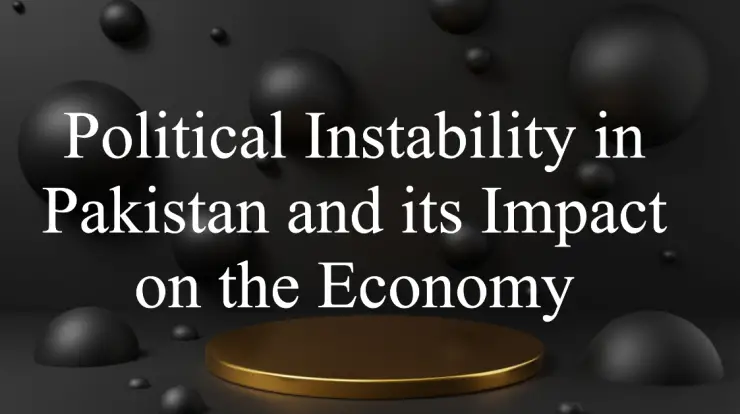
Introduction
Pakistan is currently facing immense political instability due to ongoing tensions between the government led by Prime Minister Shehbaz Sharif and former Prime Minister Imran Khan of the Pakistan Tehreek-e-Insaf (PTI) party. This political turmoil is having detrimental effects across all sectors of Pakistan’s struggling economy.
Key Points
- Pakistan has had significant political instability and leadership changes since its inception in 1947
- Imran Khan was ousted as PM in April 2022 through a no-confidence vote led by opposition parties
- Khan alleges the US organized his removal; the US denies this claim
- Protests, accusations of conspiracy, and calls for snap elections have created chaos
- The economic crisis and political instability reinforce each other in a vicious cycle
Background on Pakistan’s History of Political Instability
Since gaining independence in 1947, Pakistan has had a turbulent political history with no prime minister having completed a full term in office. Governments have repeatedly been overthrown either through assassinations, military coups, judicial interventions, or other means.
Some key events demonstrating Pakistan’s political instability over the decades:
- 1951 – Prime Minister Liaquat Ali Khan assassinated
- 1958 – Military coup by General Ayub Khan
- 1977 – Military coup by General Zia ul-Haq
- 1988 – President Zia killed in a plane crash
- 1999 – Prime Minister Nawaz Sharif overthrown by General Musharraf
- 2022 – Imran Khan removed through no-confidence vote
This persistent political chaos creates an environment of uncertainty that weighs heavily on the economy.
The Ouster of Imran Khan as Prime Minister
In April 2022, Prime Minister Imran Khan was removed from office after losing a no-confidence vote in parliament. This was the first time in Pakistan’s history that a prime minister was voted out by a no-confidence motion.
The key events leading to Khan’s removal:
- March 2022 – Dozens of PTI members defect, leaving Khan short of a majority
- March 28 – Opposition files no-confidence motion against Khan
- April 3 – Khan alleges foreign conspiracy; names US for plotting his removal
- April 9 – Supreme Court rules against Khan, allows vote to proceed
- April 10 – Khan ousted after losing no-confidence vote
Khan has since claimed that the US organized with Pakistani opposition parties to have him removed over his foreign policy stances on Russia, China, and Afghanistan. The US firmly denies these allegations.
The Resulting Political Chaos and Calls for Snap Elections
In the months since Khan’s ouster, Pakistan politics have been mired in persistent turmoil and uncertainty:
- Khan holds mass rallies demanding early elections
- PTI resigns en masse from National Assembly
- Violence erupts at protests; police clashes with PTI supporters
- Shehbaz Sharif takes over as new Prime Minister
- Khan and PTI urge military to abandon neutrality
- Courts, ECP pressed on timing for next general election
- Caretaker government must be appointed soon
This political disarray is undermining Pakistan’s economy when it can least afford further instability. With foreign reserves dwindling, the next government will need to urgently secure external financing from the IMF and friendly countries.
Impact of Political Instability on Pakistan’s Economy
Pakistan currently finds itself in the midst of an economic crisis and political instability that reinforce each other in a vicious downward spiral.
Key Economic Challenges
- Fast depleting foreign exchange reserves
- Historic depreciation of Pakistani Rupee
- Persistent double-digit inflation
- Widening fiscal and current account deficits
- Declining tax revenues; falling exports
The political turmoil directly exacerbates these economic woes in several key ways:
Policy Paralysis and Reform Delays
- Urgent structural reforms on hold due to no working majority in parliament
- IMF bailout program negotiations interrupted
- Macroeconomic stabilization policies not being implemented
This policy paralysis puts access to crucial external financing at risk.
| Year | Foreign Exchange Reserves (bn USD) |
|---|---|
| 2021 | $16.1 |
| 2022 | $14.2 |
| Nov 2023 | $7.8 |
Pakistan’s foreign exchange reserves have plummeted to extremely dangerous levels.
Increased Uncertainty and Falling Investments
- Investors and businesses withhold decisions amid political uncertainty
- FDI slowed to $1.1 billion in July-April FY 2022 vs $2.1 bn last year
- Pakistan’s credit rating cut deeper into junk status
- PSX benchmark KSE-100 index down 17% in 2022
This fall in investments leads to slower economic growth.
Rising Debt Burdens
- Debt servicing made more expensive by currency depreciation
- Public debt reached Rs 50 trillion by October 2022
- Debt-to-GDP ratio surged to over 75% of GDP
High debt levels constrain government’s financial room to provide stimulus.
Conclusion
In conclusion, the political drama since Imran Khan’s removal as Prime Minister has created significant instability in Pakistan at a time when the country desperately needs economic certainty. Until credible elections can be held, the economy will continue languishing from the resulting policy paralysis. All sides must prioritize acting responsibly to avoid a potential sovereign default. Compromise and swift elections provide the path towards resolving this intertwined political-economic crisis devastating the country.
